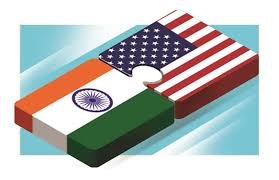Mumbai (Economy India): India’s shrimp exporters are staring at one of their most challenging years in recent memory after the United States announced a sharp increase in import tariffs on Indian shrimp. According to a fresh report by Crisil Ratings, the new duty—raised to 58.26 per cent effective August 27—could trigger a 15–18 per cent fall in export volumes during the current fiscal year.
Shrimp Sector Under Pressure
Shrimp exports are a cornerstone of India’s seafood industry, contributing nearly 40 per cent of the country’s marine product shipments and earning over USD 8 billion annually. The United States has traditionally been India’s largest market, accounting for close to one-third of all shrimp exports.
With the latest tariff hike, Indian exporters are set to lose significant competitiveness compared to rivals in Ecuador, Vietnam, and Indonesia, who enjoy lower duty structures.
“Exporters had frontloaded shipments in the April–June quarter anticipating the tariff revision. However, the cushion from that surge will be temporary. Revenues are projected to decline 18–20 per cent year-on-year in FY26,” Crisil Ratings said.

Exporters Rethink Strategies
Industry players are now scrambling to realign business strategies:
- Diversifying product mix: Companies are focusing on value-added shrimp products, ready-to-cook packs, and niche premium varieties to sustain margins.
- Seeking new markets: Exporters are scouting opportunities in Europe, East Asia, and the Middle East to reduce dependence on the US.
- Tightening costs: Efforts are underway to improve operational efficiency in aquaculture and processing units.
Yet, analysts warn that such adjustments will take time, leaving exporters exposed in the short term.
Stagnant Revenues and Mounting Challenges
The shrimp sector has been struggling with flat revenues for the last four years. Climate risks, disease outbreaks in aquaculture farms, and fluctuating international demand have already squeezed profitability.
For small and medium-sized exporters—many of whom depend heavily on US orders—the steep tariff could prove devastating. Industry insiders caution that layoffs, reduced procurement from farmers, and margin cuts are all possible outcomes if corrective action is delayed.
Government and Industry Response
The Seafood Exporters Association of India (SEAI) has urged the government to open diplomatic channels with Washington and push for tariff relief. It has also called for stronger domestic support in the form of subsidies, export incentives, and cold-chain infrastructure upgrades.
The Ministry of Commerce and Industry has acknowledged exporters’ concerns and is evaluating policy options. Officials have indicated that discussions are ongoing to provide sectoral relief and ensure that rural farmers dependent on aquaculture are not disproportionately affected.
Impact on Coastal Economies
Shrimp farming is concentrated in coastal states such as Andhra Pradesh, Odisha, Gujarat, and West Bengal, where it supports hundreds of thousands of small-scale farmers and workers. A contraction in exports threatens not just foreign exchange earnings but also rural employment and income stability.
“Shrimp exports are not only an economic driver but also a livelihood lifeline for coastal India. Any downturn will directly hit rural households,” said an industry expert.
Outlook
Crisil has cautioned that without tariff relief or breakthrough in new markets, the sector will face a difficult fiscal year. Exporters will need to aggressively expand into alternative geographies and invest in product innovation to mitigate the impact.
While India remains a dominant player in global shrimp production, the tariff shock underscores the vulnerability of overdependence on a single market. In the absence of policy intervention, India’s seafood industry may be forced into a painful phase of adjustment.
(Economy India)















